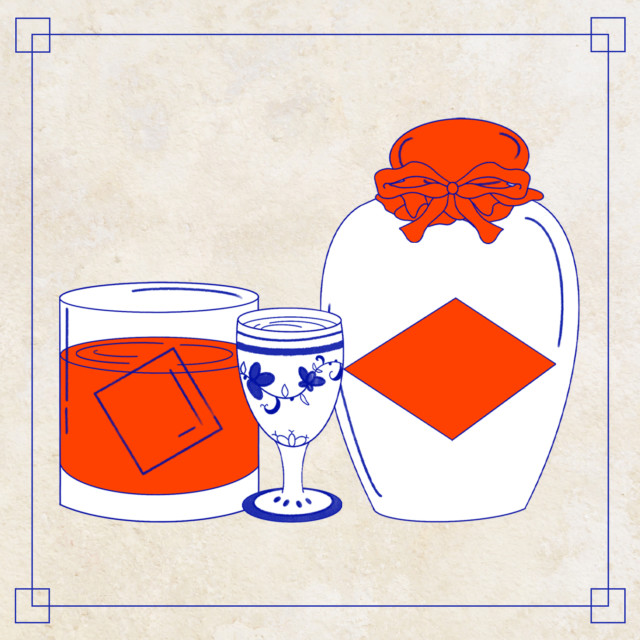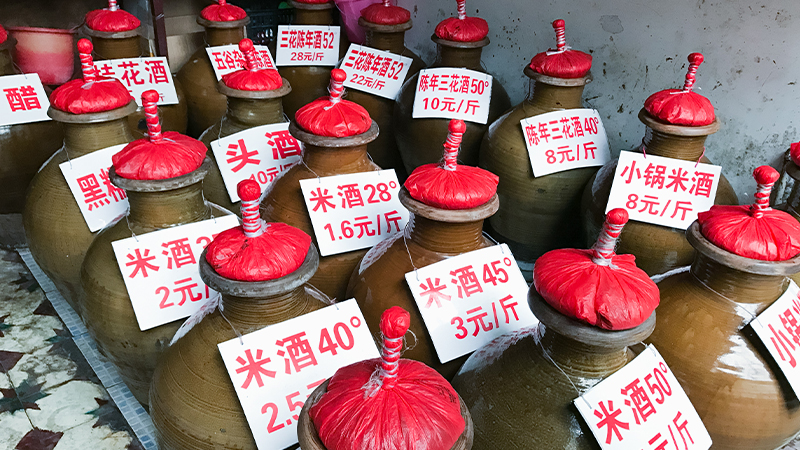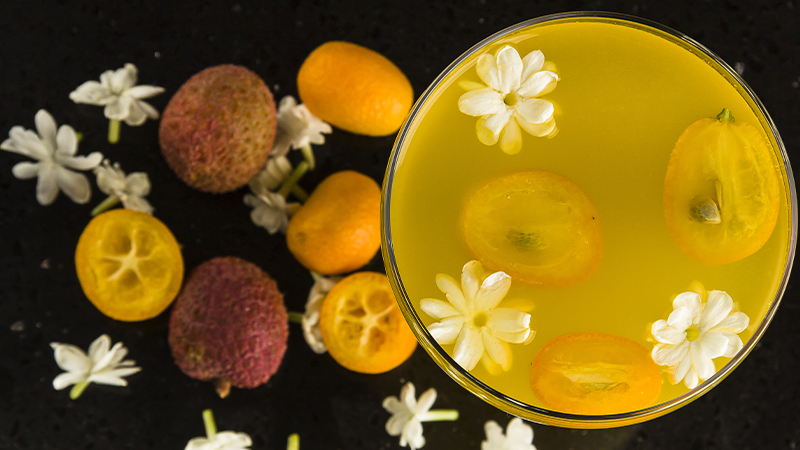If an American knows about baijiu, they usually know two things: It comes from China, and it’s unusual. They may have heard that it’s the world’s best-selling spirit category, but they might chalk that up to China’s residents making up roughly 18 percent of the world’s population. This cynical take may help them rationalize the popularity of a spirit that, according to what they may have heard from adventurous spirits aficionados or what they may have seen on YouTube, carries a reputation for being unorthodox. The media fuels this sentiment, with high-profile publications posting the occasional article that discusses the spirit in unflattering terms.
There is much to know about baijiu that goes beyond these common tropes. First off, it’s pronounced “bye-JOE,” like you’re casually bidding your buddy Joe adieu. Secondly, baijiu is an unorthodox spirit to the American palate, and even its most ardent fans will echo this sentiment. But unorthodox doesn’t always equate to bad tasting, and those willing to give baijiu a fair shake and not dismiss it solely on its sullied reputation may find its uniqueness to be a wonderful thing.
This can be especially true in a cocktail built around baijiu and other supportive ingredients, something that bartenders who are into the spirit enjoy doing. “I’ll always recommend a baijiu cocktail to customers,” says Ashley Mac, bar manager and assistant general manager at NiHao in Baltimore. “Once they see how excited I am when I start talking about them, they’re usually compelled to give one a try.”
A Complex Story
Asking about baijiu’s flavor profile in the context of a cocktail is a loaded question. Categorically speaking, the spirit consists of four styles: rice aroma, light aroma, strong aroma, and sauce aroma. Rice and light aromas are more gentle expressions with mellow floral and fruity notes, making them ideal for creating or reimagining cocktails that call for a neutral spirit like vodka. “A light aroma baijiu is a perfect spirit for building a Cosmo-style drink,” Mac says.
Strong and sauce aromas deliver a pronounced, more eclectic adventure to the palate. The former can deliver concentrated notes ranging from pineapple to star anise and even blue cheese, while the latter can carry pointed umami flavors like mushroom and bitter herbs. These styles tend to draw comparisons to other spirits known for carrying a range of fruity, herbal, or earthy notes, like whiskey, cachaca, and rhum agricole. Putting them in a cocktail subdues their boldness, allowing the spirit to impart a subtle pop of expression that can range from tart to earthy, depending on what’s used. This characteristic gives bartenders a wide berth to riff on several classic drinks — Negronis, Daiquiris, Whiskey Sours, and tiki drinks like Painkillers and Jungle Birds are fair game.
Some of the cocktail ideas come from understanding the different styles, but they can also come from personal experience. “The first baijiu I smelled had a note that reminded me of the pineapple you get from a Lifesavers 5 Flavors roll. I was like, ‘What is this?’”says Charlie Schott, beverage director at Longman & Eagle in Chicago. “Now, I like using baijiu to introduce subtle pineapple flavors into drinks.”
The wide range of baijiu styles also means the category can play nice with a broad array of supporting ingredients. “There are so many secondary ingredients that can work with baijiu,” says Derrick Li, bar director at Palette Tea Garden in San Mateo, Calif. “Passion fruit, coconut oil, strawberry, tea, pineapple, apple, nuts, prickly pear — the list goes on.”
The Building Blocks of Flavor
The prime mover of baijiu’s broad flavor range — and subsequently, the eclectic scope of cocktails they can create — is qu (pronounced “chew”), clumps of grains formed into large bricks or small balls and left to ferment. Over time, yeast, mold, and microbacteria cultivate the qu, which converts the grains’ starch into sugar and, eventually, alcohol. This isn’t as unusual as it may sound — the fermented mold koji works in a similar fashion to produce sake and shochu in Japan. Fermentation can occur in myriad vessels of varying size, from jars to mud pits. Climate and terroir substantially impact qu’s chemistry; moving a distillery so much as a mile can greatly change the resultant baijiu’s flavor profile.
Such rampant volatility creates a wide range of variance that is somewhat unknown to the average American imbiber. “Flavor is definitely a huge misconception with baijiu because it’s not a flavor profile that we’re used to here in America,” Li says. “This can be extremely frustrating when people aren’t open to the idea of trying a different type of spirit.”
This conundrum is something bartenders and other baijiu advocates aim to gently resolve, either through cocktails or simply by cracking open a bottle for those wary of the spirit. “The single most important way to get baijiu’s message across is by interaction with the public,” says Derek Sandhaus, author of “Drunk in China” and co-founder of the baijiu brand Ming River. “We really can’t put all of our energy into ad or marketing campaigns, because it’s important to get people to understand the category in its proper context. This means interacting with them so they can become familiar with the category’s broad spectrum of styles and flavors.”
Giving It a Try
It is true that baijiu isn’t for everyone. Then again, neither is Scotch, mezcal, or amaro. Individual taste should never hinge upon what others perceive when it comes to alcohol, and this seems especially true with baijiu, since tales of its notoriety far outpace stories of experience. “It’s frustrating that people will rip it blindly,” Sandhaus says. “I’m not going to be mad if someone doesn’t like it, but they should at least give it a fair shake.”
A bartender’s ability to create a proper baijiu cocktail can be so crucial for that fair shake to occur. While drinking baijiu on its own can be an intimidating proposition, a delightful baijiu-based riff on a classic drink may be the perfect introduction to a unique category. “Bartenders are the gatekeepers of all things alcohol,” Sandhaus says. “Any time someone that’s a trusted authority on good, delicious drinks can help get a product in front of people, [that] can help promote interest in a spirit. And baijiu is no exception.”
Of course, drinking a baijiu cocktail doesn’t guarantee an appreciation for the category. What it does guarantee, though, is the ability to form an educated opinion based on personal experience rather than hearsay. Considering one of the things Americans tend to know about baijiu is its reputation as an unorthodox spirit, this type of opinion seems like an important one to possess.


